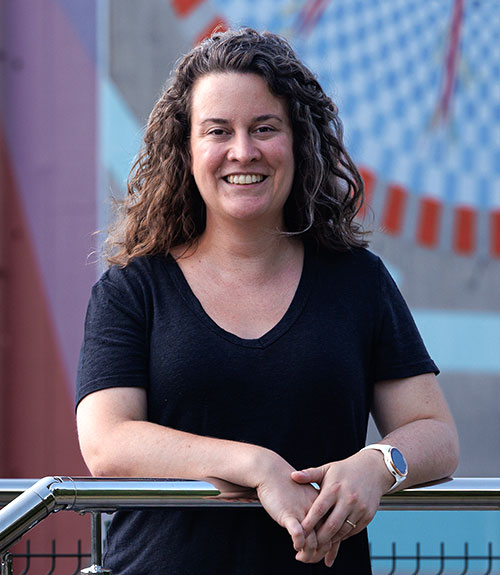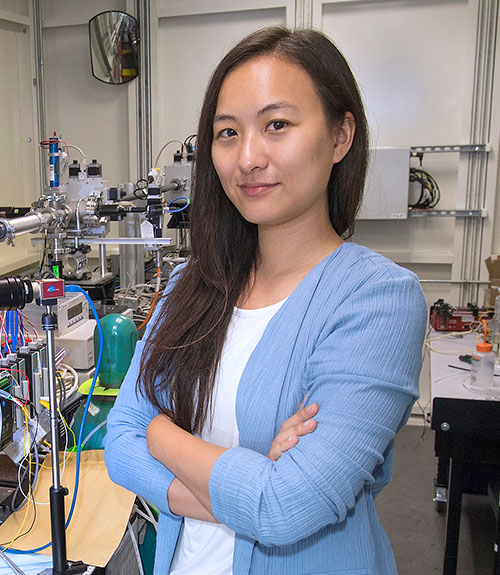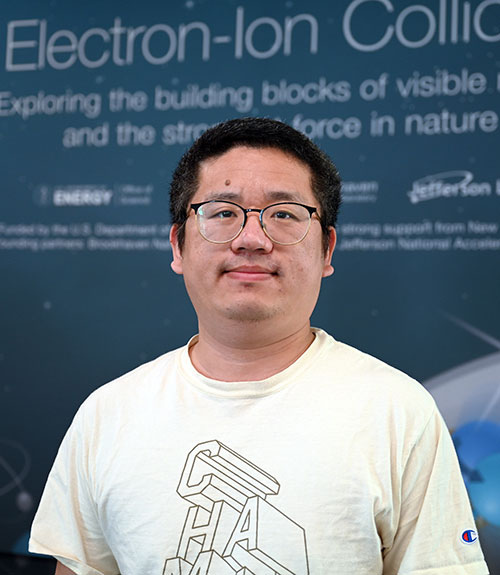Four Brookhaven Scientists Receive Early Career Research Awards
Awards provide new funding for studies of Higgs boson, devices for future quantum networks, maximizing accelerator 'luminosity,' and AI/ML-enabled research on materials for energy applications
August 4, 2023
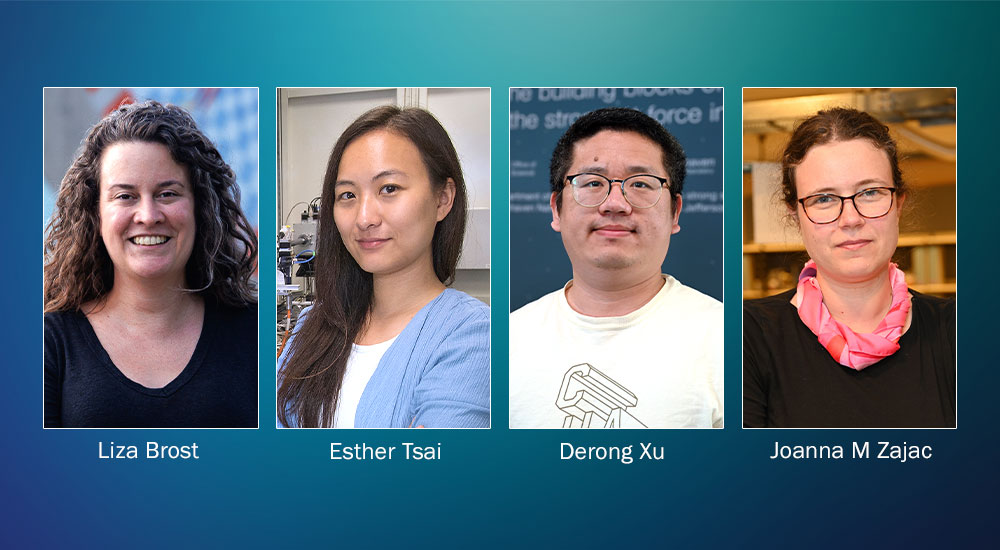
UPTON, NY—Four scientists at the U.S. Department of Energy’s (DOE) Brookhaven National Laboratory have been selected by DOE’s Office of Science to receive significant funding through its Early Career Research Program. The program, which began in 2010, bolsters the nation’s scientific workforce by supporting exceptional researchers at the outset of their careers, when many scientists do their most formative work.
The awards are a part of the DOE’s long-standing efforts to develop the next generation of STEM leaders to solidify America’s role as the driver of science and innovation around the world.
“Supporting America’s scientists and researchers early in their careers will ensure the United States remains at the forefront of scientific discovery,” said U.S. Secretary of Energy Jennifer M. Granholm. “The funding announced today gives the recipients the resources to find the answers to some of the most complex questions as they establish themselves as experts in their fields.”
DOE is recognizing a total of 93 awardees representing 47 universities and 12 DOE National Laboratories in 27 states. Awardees were selected based on peer review by outside scientific experts.
The projects announced today are selections for negotiation of a financial award, and cover projects lasting up to five years in duration. The final details for each are subject to final grant and contract negotiations between DOE and the awardees. The Early Career Research Program is funded by DOE’s Office of Science.
Information about the 93 awardees and their research projects is available on the Early Career Research Program webpage.
This year’s Brookhaven Lab awardees are:
Elizabeth (Liza) Brost, “Shining Light on the Higgs Self-Interaction”
Elizabeth Brost, an associate scientist in Brookhaven Lab’s Physics Department, will receive funding through the DOE’s Office of High Energy Physics to study properties of the Higgs boson, including its self-interaction.
Discovered in 2012 at the Large Hadron Collider (LHC) at CERN in Switzerland, the Higgs boson is the fundamental particle associated with the Higgs field, which imparts mass to other fundamental particles. The Standard Model of particle physics, scientists’ best understanding of the particles and forces that make up our world, predicts that the Higgs field can interact with itself. This self-interaction should contribute to the production of pairs of Higgs bosons at the LHC. Brost’s studies of Higgs pair production will provide a path towards measuring the Higgs self-interaction—and ultimately a deeper understanding of the Higgs boson’s role in the Standard Model.
One major challenge is that pair production of Higgs bosons is extraordinarily rare in proton-proton collisions at the LHC—more than 1000 times rarer than collisions producing single Higgs bosons! In this project, Brost will lead the development of novel techniques to select fruitful collision data in real time using machine learning algorithms. Using data from the LHC’s ATLAS detector, she and her collaborators will search for the direct and indirect effects of “new physics” beyond the Standard Model on Higgs pair production. These measurements may confirm that the Higgs behaves as expected in the Standard Model. Or they may point to the influences of new physics, which must then be incorporated into explanations of the Higgs mechanism and other areas of physics.
“I am honored to receive this Early Career Award, which will enable me to pursue some of the most interesting open questions in high energy physics,” Brost said. “The analysis and data-collection techniques developed through this project will advance our understanding of the Higgs boson at unprecedented scales, not only at the LHC but also at proposed future colliders.”
Brost earned her undergraduate degree in physics and French from Grinnell College in 2010 and her Ph.D. in physics from the University of Oregon in 2016. After serving as a postdoctoral research associate at Northern Illinois University from 2016 to 2019, she joined Brookhaven National Laboratory as an assistant physicist. She was promoted to associate physicist in 2021. Stationed at Europe’s CERN laboratory, home to the LHC, Brost has led groups of hundreds of ATLAS physicists on a range of analyses and detector upgrades, many associated with “di-Higgs” searches. She also has extensive experience mentoring students and postdocs, who will play important roles in executing the goals of this Early Career Award project.
Esther Tsai, “Virtual Scientific Companion for Synchrotron Beamlines”
Esther Tsai, a scientist in the Electronic Nanomaterials Group of the Center for Functional Nanomaterials (CFN), aims to strengthen the interactions between human scientists and the artificial intelligence/machine learning (AI/ML) tools that can accelerate their research. With funding from the DOE Office of Basic Energy Sciences, she is developing a revolutionary system that will allow scientists to launch experiments and analyze data using a conversational interface.
She’s particularly interested in alleviating bottlenecks at the National Synchrotron Light Source II (NSLS-II)—a source of extremely intense x-rays used by more than 1,700 researchers from universities, industry, and other national laboratories each year to study the properties of a wide range of materials. Currently, CFN and NSLS-II staff collaborate with these facility “users,” assisting in the setup, scientific planning/discussion, and analysis of data from experiments at several beamlines run in partnership by these two DOE Office of Science user facilities. Their research on complex materials has the potential to improve the performance of electronics, solar cells, batteries, and other applications. But the beamlines are often understaffed and oversubscribed.
“Beamline scientists have the daunting mission of supporting various aspects of beamline operation and user science through tireless and sleepless efforts,” Tsai said.
Her goal is to develop a virtual scientific companion, known as VISION, that will synergistically connect researchers with computational tools to speed up the experimentation so everyone can make more discoveries—and possibly get more sleep.
The virtual assistant will leverage modern developments in natural language (NL) processing and language models—the technology underpinning the revolutionary capabilities of chatbots and AI assistants. Tsai will tailor these methods to scientific experiments, allowing researchers to input queries in ordinary language without the need for complex coding. VISION will transcribe NL voice to text, acquire and analyze data, visualize results, and provide advanced learning algorithms and physics modeling to suggest optimal experiment design or hypotheses for further exploration. This powerful, general approach can be extended to a host of scientific instruments to accelerate the pace of discovery across the DOE complex.
“We’re not taking humans out of the picture; we’re actually making it easier for humans to use their natural form of expression, whether speaking or texting, to leverage the strengths of powerful AI/ML programming. We envision a new era where human NL-based communication will be the only needed interface for scientific experimentation and design,” said Tsai.
“It is a great honor and responsibility to receive this Early Career Award. I am so very grateful for the support I’ve received from colleagues at Brookhaven and especially my group leader, Kevin Yager,” Tsai said. “I will continue to need their support to introduce this new paradigm of NL-controlled scientific expedition.”
Tsai earned a bachelor’s degree in electrical engineering in 2009 and a Ph.D. in electrical and computer engineering in 2014, both from Purdue University. Before joining Brookhaven Lab’s CFN as an assistant scientist in 2018, she conducted postdoctoral research and provided user support at the Swiss Light Source at the Paul Scherrer Institute from 2015 to 2018. She was promoted to associate scientist at Brookhaven in 2021, and to scientist in 2023.
Derong Xu, “Luminosity Maximization with Flat Hadron Beams”
Derong Xu, an assistant physicist working on the future Electron-Ion Collider (EIC) at Brookhaven Lab, is striving to maximize the collider’s most important figure of merit by maintaining the flatness of a beam of ions travelling at nearly the speed of light.
The EIC will collide two beams—one containing electrons and the other containing protons or other atomic nuclei. The collisions between individual electrons and other ions will produce data that scientists will use to study the internal structure of protons and nuclei, including the arrangement of those particles’ quarks and gluons. If more particle collisions occur, scientists can produce and analyze more data that contribute to our understanding of how visible matter evolved from the quark-gluon plasma studied over the past two decades at the Relativistic Heavy Ion Collider (RHIC), an Office of Science user facility at Brookhaven.
Physicists can increase the likelihood of these collisions occurring by reducing beam size—packing the same number of particles into a smaller space. This methodology, known as maximizing “luminosity,” is exactly what Xu will work on for the EIC with funding from DOE’s Office of Nuclear Physics. According to calculations by Xu and his colleagues, flattening the ion beam of the EIC will help attain the maximum luminosity. This approach has never been used in a hadron collider—a machine that collides composite particles made of quarks and gluons.
Though scientists can generate flat ion beams, maintaining this flatness as trillions of charged particles whirl around a collider is a challenge. There are numerous potential interactions, such as those between beams and the superconducting accelerator magnets, that could compromise the quality of the beam and make it harder to focus it to a small, flat spot size at the collision point. Xu’s work will dissect the interactions that could alter beam flatness and investigate methods to reduce or eliminate these effects to maintain high luminosity.
“Our efforts to improve the luminosity for the EIC will also benefit other future colliders,” said Xu. “I am excited to contribute to this important research endeavor.”
“I am deeply honored to receive this award and express my heartfelt gratitude for this exceptional opportunity,” Xu added. “The challenge of using a flat beam in future colliders captivates me, and I am eager to explore this topic further.”
Xu studied accelerator physics at the University of Science and Technology of China (USTC), receiving a bachelor’s degree in 2011 and a Ph.D. in 2016. Xu was a postdoctoral fellow from 2017 to 2018 and then a research fellow from 2018 to 2019 at the National Synchrotron Radiation Laboratory at USTC. Xu’s work on the EIC began at Michigan State University in 2019 and continued at Brookhaven when he joined the Lab in 2021 as an assistant physicist.
Joanna M Zajac, “Interactions of QDs’ Fast Light in Rb Vapors for Hybrid Quantum Information Science and Technology”
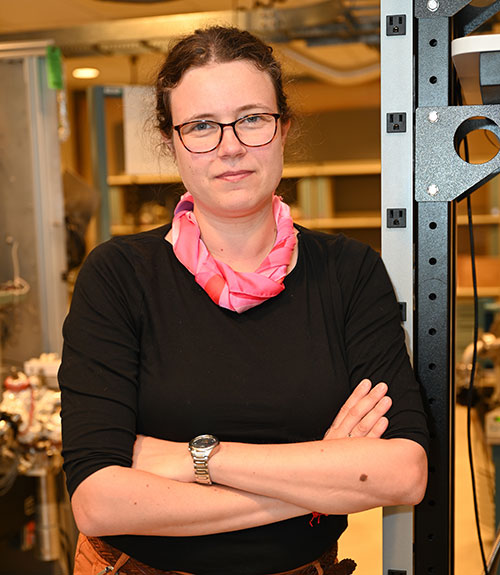
Joanna M Zajac
Joanna M Zajac, a quantum scientist in the Instrumentation Division, is tackling one of the biggest challenges in quantum networking—developing a fundamental understanding of fast light-matter interconnects that could one day facilitate long distance quantum networks.
With funding from the DOE Office of Basic Energy Sciences, she will design and build systems that use quantum dots (QD) to generate identical single photons (the simplest fundamental portions of light) in the wavelengths used for optical telecommunication. Quantum dots are light-emitting semiconductor nanostructures whose emission can be tuned to different wavelengths. They could potentially generate photons suitable to work at telecommunication and atomic wavelengths. That would help to reduce the high losses currently experienced when quantum information travels through the telecommunication optical fibers network.
The goal is then to couple QD single photons with alkali vapors, such as rubidium (Rb), which can reliably store quantum information. These light-matter interconnects may one day operate as a basis for quantum repeaters that receive and then re-emit quantum information making up nodes of quantum network connected by optical links over long distances. This research could be applied to a range of areas in quantum information science and technology such as quantum computing, quantum communications, and quantum sensing.
“Fast light-matter interconnects made of alkali atomic ensembles and photons from quantum dots (QDs) create a heterogenous system that combines the advantages of its homogenous components’, Zajac said. “Within this project we are going to develop fundamental understanding of interactions therein allowing us to develop components of long-distance quantum networks in the future. This DOE award gives me a fantastic opportunity to explore this important topic among the vibrant scientific community in Brookhaven Lab’s Instrumentation Division and beyond.”
Zajac pursued her education in the United Kingdom, earning her master’s degree in physics from Southampton University in 2008 and her Ph.D. in physics from Cardiff University in 2013. She was a postdoctoral research associate at Heriot-Watt University from 2013 to 2016 and a research fellow at St. Andrews University in 2016. Before joining Brookhaven Lab’s Instrumentation Division as a quantum scientist in 2021, she was a senior researcher at Oxford University (2020-21), United Kingdom.
Brookhaven National Laboratory is supported by the Office of Science of the U.S. Department of Energy. The Office of Science is the single largest supporter of basic research in the physical sciences in the United States and is working to address some of the most pressing challenges of our time. For more information, visit science.energy.gov.
Follow @BrookhavenLab on social media. Find us on Instagram, LinkedIn, Twitter, and Facebook.
Denise Yazak and Danielle Roedel contributed to the writing of this news release.
2023-21335 | INT/EXT | Newsroom




